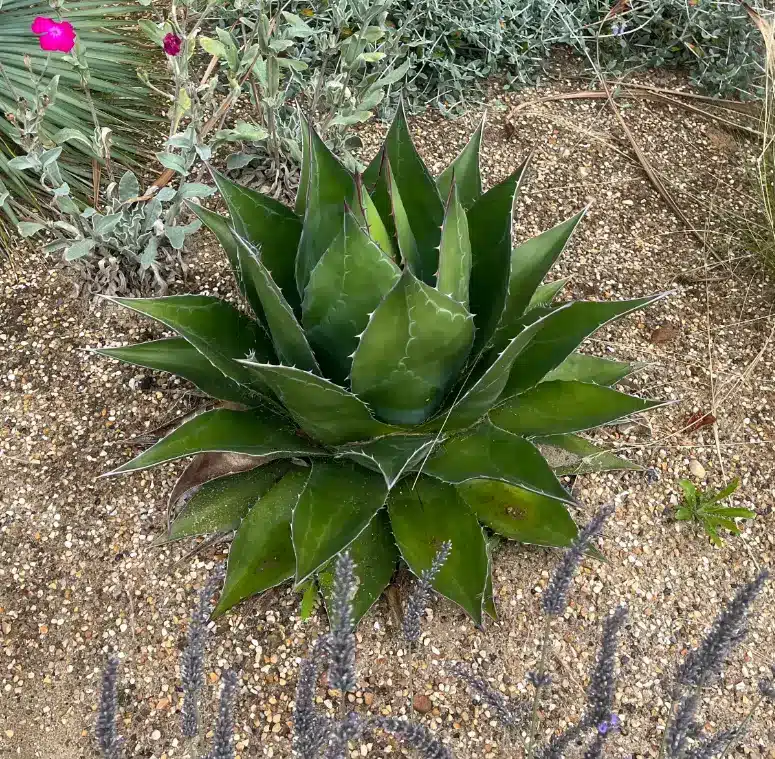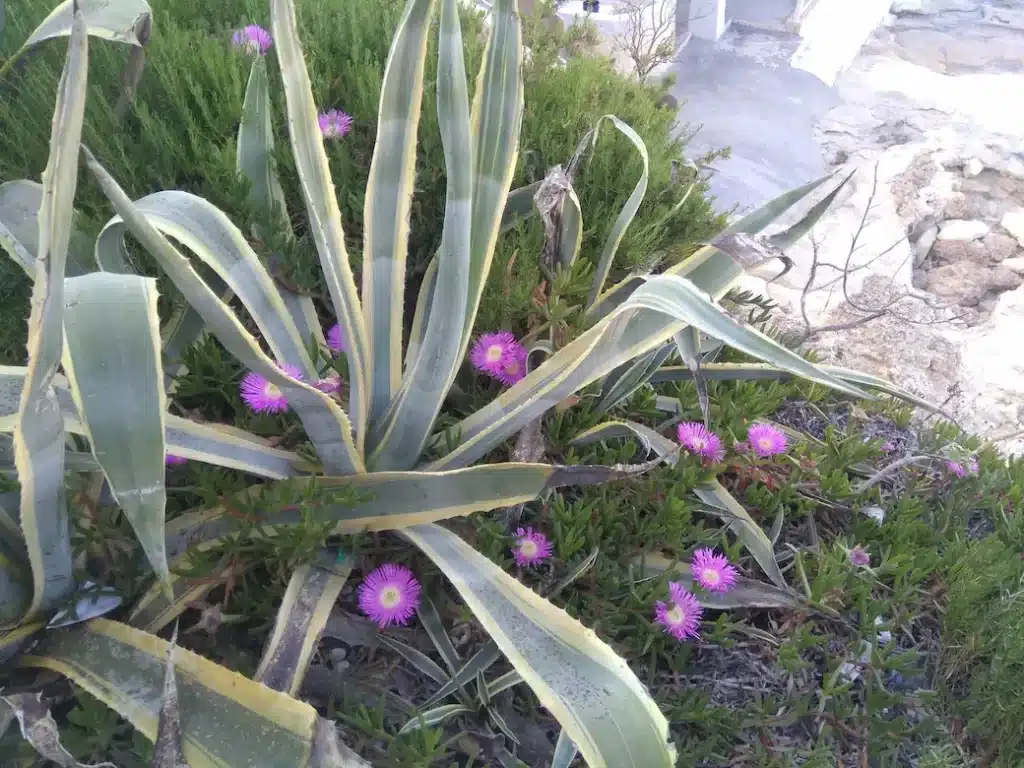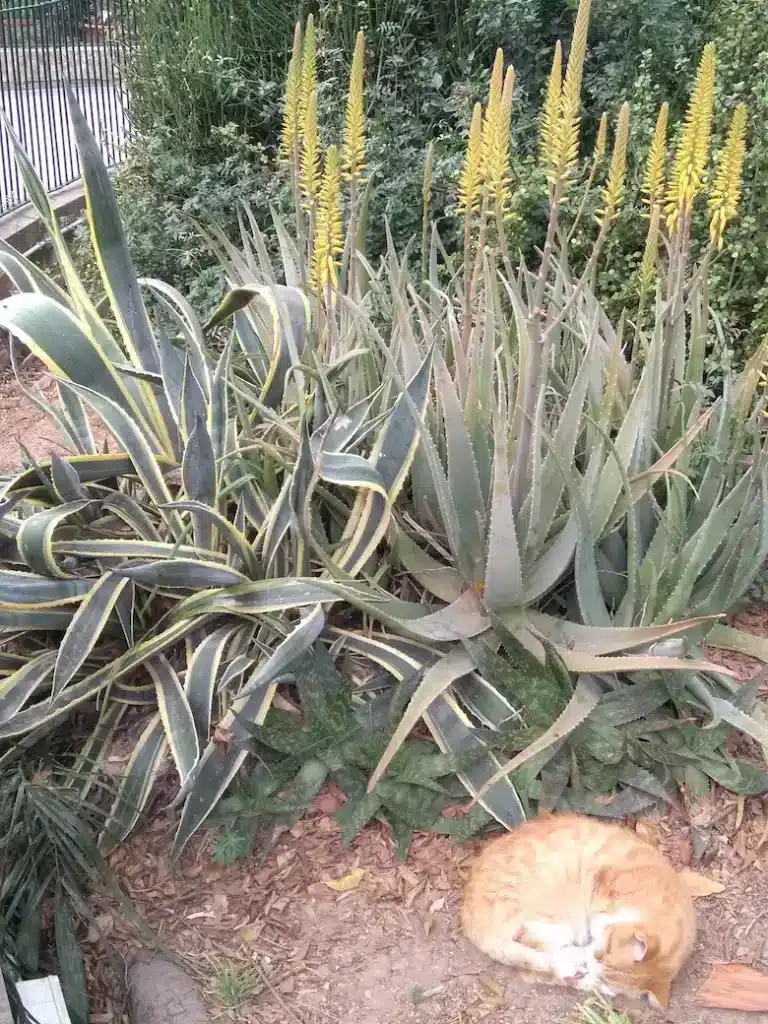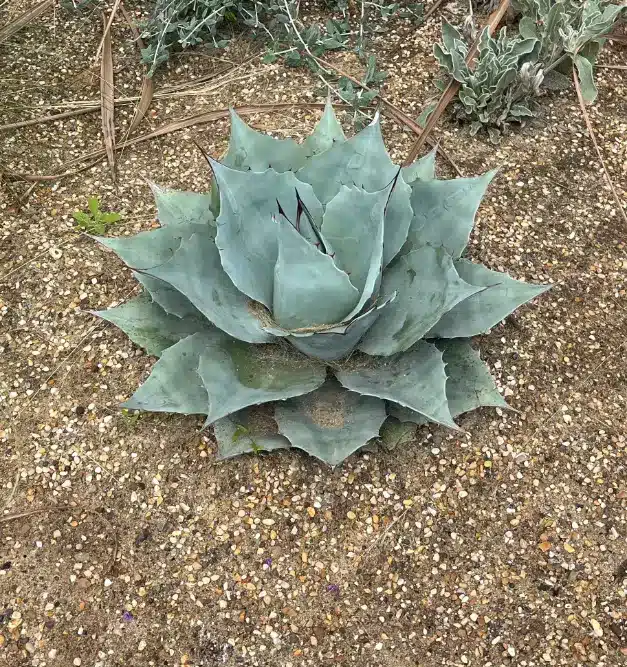How to Care for Agave plants

Key takeaways - Agave
-
Common Plant Name
- Agave
-
Botanical Name
- Agave spp.
-
Botanical Family
- Asparagaceae
-
Plant Type
- Succulent
-
Mature Size
- Varies by species
-
Sun Exposure
- Full sun
-
Soil Type
- Well-draining, sandy soil
-
Soil pH Neutral
- Neutral
-
Bloom Time
- Varies
-
Flower Color
- Varies
-
Hardiness Zones
- 8 to 11
-
Native Region
- Americas, mainly arid regions
Agave is a very well-known succulent plant, from the monocots genus that is recognized worldwide. The Agave plant is very common as decorative plants in gardens in warmer climates, or small specimens as indoor houseplants on a sunny windowsill. Agave plants originate from northern Mexico, but are spread throughout the country, mostly thanks to human assistance. Its natural habitat is in very dry and arid regions with lots of sunshine and high temperatures. Today, Agave is a very common ornamental plant across the world in warmer climates. Currently, it is estimated that there are approximately 200 species of agaves, of which more than half are located in Mexico, in a great variety of sizes, shapes, colors, and particular characteristics.
It may come as a surprise, but the Agaves belong to the asparagus family. Including numerous species characterized by flowering only once, and dying when they reach a mature age.
All Agaves are easily identified by their succulent or leathery leaves that form rosettes ranging in diameter from 6 inches (15 cm) to over 20 feet (6.1 m). The leaves vary in size, shape, texture, and color, with leaf margins usually lined with teeth and pointed with a stiff, sharp spine along the edges. A few Agave species have unarmed, leathery leaves. When the plant matures, a tall, branched, or unbranched stalk emerges from the center of the rosette and produces a large number of long-lasting flowers. In some species, the inflorescences may reach more than 33 feet (10 m) in height, with flowers being shortly tubular, and ranging in shades of white, yellow, and green, producing capsule fruits.
Most Agave species are monocarpic plants since the flower rosette dies after bearing fruit. Although, throughout the plant’s lifespan, most Agaves produce rhizomatous suckers (offsets) that grow into new plants. A few species are polycarpic and can flower multiple times throughout their life.
How to Grow Agave - Step by Step Guide
It is rather easy to care for Agave plants since they typically are low maintenance once established. They are an easy succulent to grow if you follow a few fairly simple rules below:

Interesting Agave wisdom
It is worth mentioning that this species of plants were given the name “maguey” in ancient villages and after the arrival of the Spanish settlers. “Agave” is the scientific term for these species, although they are also called Mezcal, Pita and Cabuya.
Best light for Agave plants
Agave plants are sun-loving plants that prefer a location in full sun to partial shade as the most optimal growing condition. Many smaller-sized Agaves can be cultivated indoors and should be located on a bright, sunny windowsill. Like many other succulents, Agave will develop an unnatural etiolated growth in low-light conditions. Agave plants like to be outside from spring to fall. If a plant is suddenly moved to full exposure to direct sunlight can cause sunburn, if the plant is not acclimatized. Some agave plants are very tolerant to low-light environments when they are in winter dormancy. They can be taken inside during the cold months and returned outside once the weather becomes a bit more pleasant during late spring.
How to prune Agave plants
Agave plants generally do not require pruning unless they have any dead or diseased leaves. If you do need to prune them, make sure you wear gloves, pants, and a long-sleeved shirt to protect yourself from their sharp spikes and spines. Use a long sharp knife, strong shears, or a curved pruning saw that is sharp to minimize any tearing and injury to yourself.
If you’re looking to add an agave plant to your collection, check out the different varieties available and choose one that best suits your growing conditions and preferences. There are too many varieties available to go into too much detail but they come in many sizes and shapes for every home and need.
Best soil for Agave plants
Agaves are happy with most mediums as long as it is well draining. However, the most suitable soil is sandy, porous or rocky soil, which is similar to its natural habitat. Any medium that does not dry out quickly will result in an unhappy Agave plant that may encounter issues going forward.
How to fertilize Agave plants
Agave plants do not require much fertilizer. Give them a small amount of fertilizer in the spring during the first two years of growth. Established plants usually take care of themselves, and feeding them may encourage them to bloom, which could lead to premature death. These plants are survival experts in dry areas and are well suited to soil with poor nutrition and infrequent rainfall.
Agave to the left, flowering Aloe to the right, a sleeping cat below. Do not disturb!!! ZZZZZZZZZzzzzzzzz

Best temperature for Agave plants
Agave plants prefer warm temperatures during the growing season, but cooler temperatures during winter while resting. Most species are only cold-hardy in USDA hardiness zones 8a to 9b, 10 to 30 °F (-12.2 to -1.1 °C). Some Agave species can tolerate colder climate in colder hardiness zones as long as they are given some protection during the coldest months, and kept completely dry during winter dormancy. A few species, like Agave parryi, are hardy down to USDA hardiness zone 5a, -20 °F (-28.9 °C). As a general rule, protect your Agave plant from potential frost during the winter, if you are unsure of the species.
Best pot size for Agave plants
The best pot size for Agaves is easy to decide. They may be grown in containers of any size since their shallow roots do not require much soil to establish healthy growth. However, please make sure that your container has at least one drain hole so the plant doesn’t swim in water.
Large Agaves require a very large pot and will be very bulky to relocate if needed. Smaller Agave species are ideal for a pot and will thrive throughout its life.
When growing agave plants in containers, make sure the pot has at least one drain hole, and choose a container that is only slightly larger than the plant’s root system. Agave plants are shallow-rooted and do not require much soil to be happy and thrive. At times, it may seem that they are not growing in almost any soil, where half of it is just some random dirt, and still appear super happy. If this happens, just let them be and enjoy the seasonal growth. And if they seem to outgrow their growing spot completely, repot them into something slightly larger.
How to water Agave plants
Water your Agave thoroughly from spring to fall when the soil becomes dry. In winter, water sparingly, about once a month. Overwatering may cause fungal root rot. When establishing an Agave plant outdoors, water once or twice a week. Watering Mature plants are highly tolerant of drought. Water
The ideal frequency is to water it every 10 days, remember that, as with most plants, excessive watering can cause its roots to rot. Also, keep in mind that it doesn’t enjoy much humidity and does much better in dry climates. Remember that all plants have their own water needs, and learning to water them correctly is crucial to make sure they are healthy and happy.
Plants in containers require more frequent watering than those planted in the ground since the root system doesn’t reach as far and the soil dries out quicker.
Types of Agave plants
There is a long list of Agave spieces, but below are a few selected plants:
- Agave Americana: Also known as Century Plant or American Agave, it is a popular species with gray-green leaves and a tall, branched flower stalk.
- Agave Angustifolia: Native to Mexico and Central America, this species has long, narrow leaves and is commonly known as Narrow-leaf Agave.
- Agave Tequilana: Cultivated for the production of tequila, this species is commonly referred to as Blue Agave. It has bluish-green leaves and is native to Mexico.
- Agave Parryi: Found in the southwestern United States and northern Mexico, it is commonly known as Parry’s Agave. It has compact rosettes of gray-green leaves with sharp spines
- Agave Victoriae-reginae: Known as Queen Victoria Agave, it is a small species native to northeastern Mexico. It has striking dark green leaves with white markings.
- Agave Desmettiana: Also called Smooth Agave or Variegated Agave, it is known for its broad, smooth leaves and attractive variegation. It is native to Mexico.
- Agave Shawii: Native to California and Baja California, it is commonly known as Shaw’s Agave. It has gray-green leaves with prominent spines.
- Agave Attenuata: Also known as Foxtail Agave or Dragon Tree Agave, it is native to Mexico. It has soft, arching leaves that give it a unique appearance.
- Agave Salmiana: Native to Mexico, it is commonly known as Giant Agave or Salmiana Agave. It has large, fleshy leaves and can reach impressive sizes.
- Agave Sisalana: Also called Sisal Agave, it is known for its long, fibrous leaves that are used to produce sisal fibre. It is native to Mexico and is cultivated in various regions.

Agave Attenuata
Different usages of Agave
Agave plants have many historical traditions and usages that originate very far back in time. They are popular for their practical uses such as for food, beverages, medicine, and fiber.
With correct agave care, a variety of products can be produced across in industries and markets such as textiles, medicine, food, cosmetics, etc.
Fibers From the maguey, a textile fiber known as ixtle can be produced, which has been used since the Mesoamerican era. With it, it is possible to make nets, cords, leaves, mats, brushes, bags, vases, sacks, or even shoes.
Agave has several medicinal properties that can benefit us humans in many ways. In most cases, the Agave’s leaves, sap, flowers, and stalks are all edible. However, Agave is also known to cause skin irritation in certain situations, so handle it with care.
Agave and Tequila
Most of us have experienced some aches thanks to the Agave. I am not necessarily referring to the sharp spines of the leaves, but rather the one too many Tequila shots in a bar on a late night out. We wake up the following morning with a pulsating headache thinking “Never again”.

How to Propagate Agave - Guide
Propagating Agave is a rewarding process.
- Choose a mature plant, locate the offsets (pups) at the base, and carefully remove them.
- Allow the offsets to dry for a day or two before planting in well-draining soil.
- With proper care, these offsets will grow into independent Agave plants, adding to your succulent garden or giving away to nice neighbors.
How to Grow Agave From Seed - Guide
Growing Agave from seed requires patience but is a very rewarding journey to follow.
- Harvest seeds from mature plants.
- Plant them in a well-draining soil mix, and provide good sunlight.
- Make sure the soil is moist until the seeds have germinated.
Overwintering
Agave, being native to arid regions, is susceptible to cold temperatures. During winter, protect your Agave from frost by covering it or moving it indoors. Limit watering to prevent root rot, allowing the plant to enter a dormant phase until warmer temperatures return in spring.
Certain agave types can be kept during the cold winter months in dark storage, just to ensure they are protected from frost. But when the spring comes, they wake up from dormancy despite the rough treatment.
Common Pests & Plant Diseases
Agave is generally resilient, but like any plant, it can face challenges. Watch out for aphids and scale insects. Treat infestations promptly with insecticidal soap, neem oil, or by introducing natural predators. Well-draining soil and proper ventilation also help prevent root rot.
How to Get Agave to Bloom
Encouraging Agave to bloom is a waiting game, as they typically bloom after several years. Provide ample sunlight, ensure the plant is mature, and be patient. Once the magnificent bloom spike emerges, it’s a sight to behold. Other Agave plants flower every year like clockwork with perfect predictability.
Common Problems with Agave
Overwatering is the primary concern when it comes to Agave care. These plants are adapted to dry conditions, so let the soil dry out between watering. Yellow or mushy leaves are indicators of overwatering. Additionally, ensure proper spacing between plants to avoid overcrowding.
Overall, Agave plants are very resilient and are very forgiving when it comes to rough treatment.
FAQ - Agave plants
Most frequent questions and answers
Agave should not be considered a healthy replacement for regular sugar. Although, it is less harmful than sugar, anybody who monitors and manages blood glucose should avoid agave sweeteners.
Honey is considered a healthier choice. Honey is made up of fructose, and Agave has more glucose. Honey contains plenty of health benefits not found in other sweeteners.
Agave Contains Phytonutrients, which may have an antioxidant effect. Agave is also allergy friendly, as well as vegan.
The high levels of insulin in the Agave plant benefit the digestive system. However, don’t overdo it, since too much Tequila has a damaging effect on the body. No Tequila races, please!!!
The agave plant is a succulent but not a cactus. Since the Agave plant along wiht plenty of succulents grow leaves, which a cactus never do.
Certain Agave species, such as Agave Montana can endure periods of snow. Although, the soil should never become wet during the winter dormancy. Some agave can survive snow but they don’t necessarily like it.
